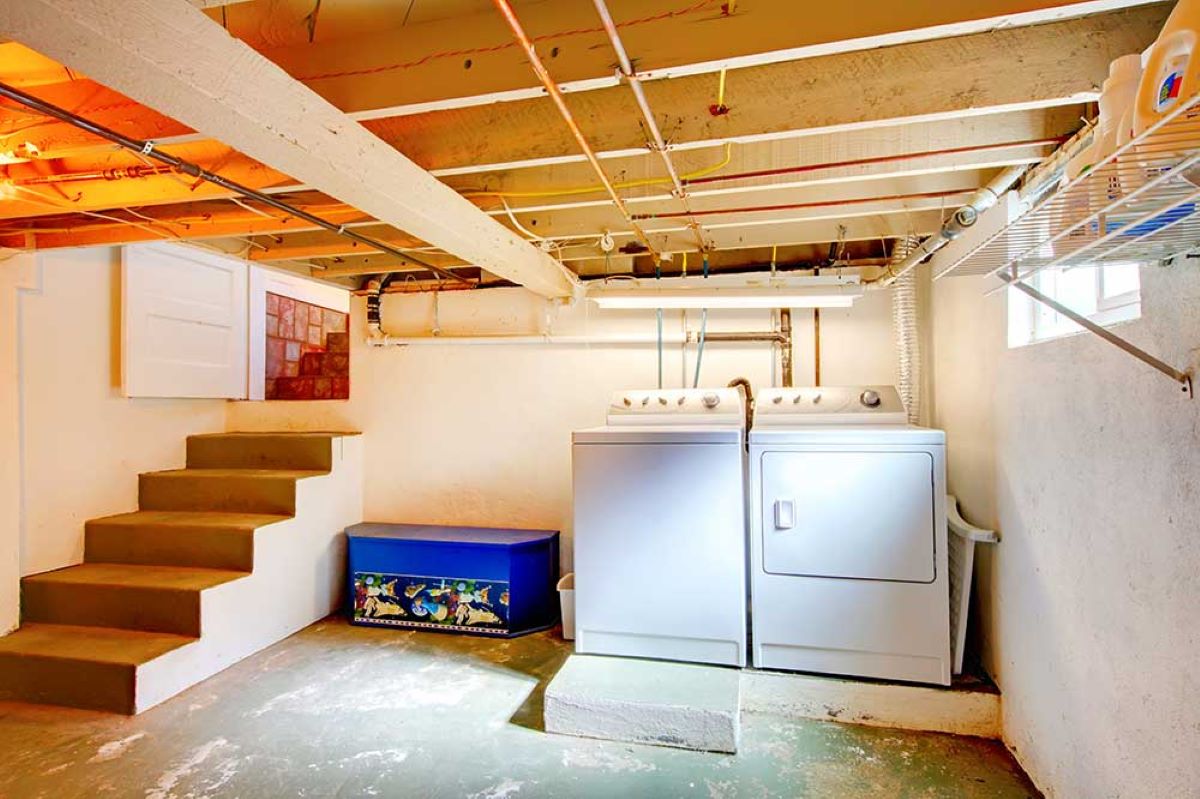

Articles
Why Is The Basement So Cold
Modified: August 28, 2024
Discover why your basement is freezing and learn how to fix it with informative articles on insulation and temperature control.
(Many of the links in this article redirect to a specific reviewed product. Your purchase of these products through affiliate links helps to generate commission for Storables.com, at no extra cost. Learn more)
Introduction
The basement is often the coldest area in a house, causing discomfort and increasing energy bills. If you’ve ever wondered why your basement feels like a freezer, you’re not alone. There are several factors that can contribute to a cold basement, from insulation issues to air leaks and humidity problems. In this article, we will explore the common causes of a cold basement and provide remedies to help you create a more comfortable living space.
One of the primary reasons for a chilly basement is inadequate insulation. Since heat rises, the lack of proper insulation in the walls, floors, and ceiling of the basement allows cold air to seep in and heat to escape. This insulation deficit creates a temperature difference between the basement and the rest of the house, resulting in a cold and unwelcoming environment.
In addition to insufficient insulation, air leaks can also play a role in the coldness of a basement. Cracks, gaps, and openings in the foundation walls or windows allow cold outside air to infiltrate the basement, leading to drafts and a drop in temperature. Identifying and sealing these air leaks is crucial to preventing cold air from entering and warm air from escaping.
Another factor to consider is inadequate ventilation in the basement. Without proper airflow, stale and moist air can become trapped, creating a damp and chilly environment. Insufficient ventilation can also lead to the accumulation of indoor pollutants, which can affect the air quality and overall comfort of the basement.
Lastly, moisture issues, such as water leaks or high humidity levels, can contribute to a cold basement. Water intrusion through cracks or faulty waterproofing can lead to dampness, which can make the basement feel colder. Excessive humidity levels can also cause condensation, resulting in a clammy and uncomfortable atmosphere.
Now that we have explored the common causes of a cold basement, let’s delve into the remedies that can help you tackle this issue and transform your basement into a cozy and inviting space. By addressing insulation, air leaks, ventilation, and moisture problems, you can create a more comfortable and energy-efficient environment in your basement.
Key Takeaways:
- Transform your cold basement into a warm, cozy space by addressing insulation, air leaks, ventilation, and moisture issues. Enjoy comfort, energy efficiency, and a healthier living environment.
- Insulate, seal, ventilate, and manage moisture to create a warm and inviting basement. Say goodbye to the chill and hello to a comfortable and enjoyable living space.
Read more: Why Is My Basement So Hot
Causes of a Cold Basement
A cold basement can be a major source of discomfort and frustration for homeowners. Understanding the causes behind a chilly basement is the first step towards finding effective solutions. Here are some common reasons why basements tend to be colder than other areas of the house:
- Insufficient Insulation: Inadequate insulation is one of the leading causes of a cold basement. Since heat naturally rises, without proper insulation in the walls, floors, and ceiling of the basement, warmth from the rest of the house easily escapes while cold air seeps in.
- Air Leaks: Cracks, gaps, and openings in the foundation walls, windows, or doors can allow cold outside air to penetrate the basement. These air leaks create drafts and result in a drop in temperature, making the basement chilly and uncomfortable.
- Lack of Ventilation: Basements often lack adequate ventilation, which can lead to the accumulation of stale air. Without proper airflow, moisture can become trapped, making the basement feel damp and cold. Additionally, insufficient ventilation can cause indoor pollutants to build up, affecting air quality.
- Moisture Issues: Excessive moisture in the basement can contribute to its coldness. Water intrusion through cracks or inadequate waterproofing can lead to dampness, creating a clammy and uncomfortable environment. High humidity levels can also cause condensation, further adding to the coldness of the basement.
- Poor HVAC Distribution: If the heating, ventilation, and air conditioning (HVAC) system in your home is not properly balanced, it can result in uneven heating distribution. This imbalance can cause the basement to receive less conditioned air, making it colder compared to other parts of the house.
These factors can work individually or in combination to make your basement cold and unwelcoming. Fortunately, there are several remedies available to address these issues and make your basement a more comfortable and enjoyable space. In the next section, we will explore these remedies in detail, providing you with actionable solutions to combat the coldness in your basement.
Insufficient Insulation
One of the primary causes of a cold basement is insufficient insulation. Without proper insulation in the walls, floors, and ceiling, the basement becomes susceptible to heat loss and cold air infiltration. Here’s a closer look at how inadequate insulation contributes to a chilly basement:
Heat Loss: Heat naturally moves from warmer areas to cooler areas. In a home, this means that warm air from the living spaces rises towards the upper floors and escapes through the roof. Without sufficient insulation, this heat can continue to rise and escape through the basement ceiling, leaving the space cold and uncomfortable.
Temperature Difference: Insufficient insulation in the basement creates a significant temperature difference between the basement and the rest of the house. As a result, the basement feels colder, and the heating system has to work harder to maintain a comfortable temperature, leading to increased energy consumption and higher utility bills.
Air Infiltration: In addition to heat loss, inadequate insulation allows cold air to penetrate the basement. Cracks and gaps in the walls or around doors and windows provide avenues for cold outside air to enter, creating drafts and lowering the overall temperature in the basement.
Insulation Types: There are several insulation options available to combat insufficient insulation in the basement. The most common types include fiberglass batts, rigid foam boards, and spray foam insulation. Each has its advantages and considerations, so it’s essential to consult with a professional to determine the best choice for your specific needs.
Insulation Installation: Proper installation is key to ensuring that insulation effectively reduces heat loss in the basement. Insulation should be installed to cover all exterior walls, rim joists, and areas where air leaks are present. It’s crucial to seal any gaps or openings before adding insulation to create a continuous thermal barrier.
Consider Professional Assistance: Insulation installation can be a complex process that requires expertise and knowledge. It’s often best to enlist the help of a professional insulation contractor who can assess your basement’s insulation needs and provide a tailored solution.
By addressing insufficient insulation in your basement, you can significantly improve its comfort level and reduce energy consumption. The next section will focus on another common cause of a cold basement – air leaks – and explore remedies to seal them effectively.
Air Leaks
Air leaks in the basement are a major contributing factor to a cold and uncomfortable living space. These openings and gaps allow cold outside air to infiltrate the basement, leading to drafts and a drop in temperature. Understanding and addressing air leaks is crucial for improving the warmth and energy efficiency of your basement. Here’s what you need to know:
Identification: The first step in addressing air leaks is to identify their locations. Common areas where air leaks occur in the basement include cracks or gaps in the foundation walls, around windows and doors, and near utility penetrations such as pipes and electrical wires. Feel for drafts or use a smoke pencil or an infrared thermometer to help locate these leaks.
Sealing Methods: Once you have identified the air leaks, it’s time to seal them. There are various methods you can use to effectively seal air leaks in your basement. Caulking is a popular option for sealing small cracks and gaps. Weatherstripping can be used around windows and doors to create a tight seal. Foam insulation can also be applied to fill larger gaps or voids.
Foundation Wall Sealing: To address air leaks in the foundation walls, consider applying a sealant or masonry caulk to fill any cracks or gaps. This will prevent cold air from seeping into the basement and improve overall insulation. Insulating your foundation walls with rigid foam boards is another effective solution to reduce air leakage and increase energy efficiency.
Window and Door Sealing: Windows and doors are common locations for air leaks. Check for gaps between the frames and the wall and use weatherstripping to seal them. Replace worn-out or damaged weatherstripping for a tighter seal. Applying caulk around the window and door frames can also help prevent air infiltration.
Pipes and Penetrations: Utility penetrations in the basement, such as pipes and electrical wires, can also contribute to air leakage. Seal around these penetrations using caulk or expanding foam to prevent cold air from entering the basement through these gaps.
Professional Assistance: If you’re unsure about identifying or effectively sealing air leaks in your basement, it’s recommended to seek professional assistance. Home energy auditors or insulation contractors can help locate hidden leaks and provide expert solutions to seal them, resulting in improved comfort and energy savings.
By addressing air leaks in your basement, you can significantly reduce drafts and prevent cold outside air from entering, creating a more comfortable and energy-efficient space. In the upcoming section, we’ll explore another crucial factor contributing to a cold basement – lack of ventilation – and discuss remedies to enhance air circulation.
Lack of Ventilation
A lack of ventilation in the basement can contribute to its coldness and discomfort. Without proper airflow, stale and moist air becomes trapped, creating a damp and chilly environment. Additionally, inadequate ventilation can lead to the accumulation of indoor pollutants, affecting the air quality and overall comfort of the basement. Here’s what you need to know about addressing the issue of a lack of ventilation:
The Importance of Ventilation: Ventilation plays a vital role in maintaining a healthy and comfortable indoor environment. In the basement, proper ventilation helps remove stale air, prevent excess moisture buildup, and improve air quality.
Natural Ventilation: If your basement has windows, you can take advantage of natural ventilation by opening them to allow fresh air to circulate. Creating cross-ventilation by opening windows on opposite sides of the basement can facilitate a flow of air. However, relying solely on natural ventilation may not be sufficient in some cases.
Mechanical Ventilation: Installing mechanical ventilation systems can be an effective solution for basements with limited or no windows. There are two primary types of mechanical ventilation systems: exhaust fans and dehumidifiers.
Exhaust Fans: Installing exhaust fans in the basement helps remove stale air and draw fresh outdoor air into the space. These fans can be installed on the basement walls, ceiling, or windows, depending on the specific needs and layout of your basement. Make sure to choose an appropriate-sized fan for your basement to ensure sufficient air exchange.
Dehumidifiers: Excessive moisture in the basement can contribute to its coldness and discomfort. Installing a dehumidifier can help reduce humidity levels, preventing condensation and dampness. Choose a dehumidifier that is suitable for the size of your basement and consider additional features like a built-in pump or humidity control settings.
Air Circulation: In addition to ventilation systems, promoting air circulation in the basement is important. Avoid blocking vents or hindering the airflow with furniture or other obstructions. Consider using fans or ceiling fans to keep the air moving, which can help distribute heat and maintain a more even temperature throughout the basement.
Maintain Good Indoor Air Quality: Inadequate ventilation can result in the accumulation of indoor pollutants, leading to health issues and discomfort. Regularly clean the basement, address any sources of pollution, such as mold or mildew, and consider using air purifiers or filters to improve the air quality.
If you’re unsure about the best ventilation solution for your basement, consulting a professional is recommended. They can assess your basement’s specific needs and provide guidance on the most suitable ventilation options to create a more comfortable and healthy living space.
In the next section, we will explore another factor contributing to a cold basement – moisture issues – and provide remedies to address them effectively.
Read more: Why Is HVAC So Expensive
Moisture Issues
Moisture problems in the basement can make it feel cold, damp, and uncomfortable. Excessive moisture can seep through cracks, cause condensation, and lead to the growth of mold and mildew. Understanding and addressing moisture issues is essential for creating a healthier and more comfortable living environment in your basement. Here are some common moisture-related problems and their remedies:
Water Intrusion: Water intrusion is a significant cause of moisture problems in basements. Common sources of water intrusion include foundation cracks, leaky pipes, and inadequate waterproofing. To address water intrusion, it is crucial to identify and fix the source of the water. Repair any cracks in the foundation walls, fix leaking pipes, and ensure proper waterproofing measures are in place.
Foundation Waterproofing: Waterproofing your basement is an effective measure to prevent moisture issues. Exterior waterproofing methods include installing a waterproof membrane or coating on the exterior walls and ensuring proper drainage around the foundation. Interior waterproofing methods involve applying a waterproof sealant or using waterproof panels on the basement walls.
Condensation: Condensation occurs when warm, moist air comes into contact with cool surfaces in the basement. This can happen on windows, pipes, walls, or other surfaces. To reduce condensation, it’s important to control humidity levels in the basement. Using a dehumidifier can help remove excess moisture from the air, preventing condensation and dampness.
Ventilation: Insufficient ventilation can contribute to moisture accumulation in the basement. Proper airflow helps to reduce humidity levels and prevent stagnant air. Utilize natural ventilation by opening windows or consider installing mechanical ventilation systems such as exhaust fans to improve air circulation in the basement.
Mold and Mildew: Excessive moisture in the basement can lead to the growth of mold and mildew, which not only contribute to a cold and damp environment but also pose health risks. To combat mold and mildew, it’s important to address the underlying moisture issues. Remove existing mold and mildew using appropriate cleaning methods and materials, improve ventilation to reduce humidity levels, and consider using mold-resistant paints or materials in the basement.
Proper Drainage: Ensuring proper drainage around the foundation is essential in preventing moisture problems. Clean and maintain gutters and downspouts to divert water away from the foundation. Grade the soil around the foundation to slope away from the house, preventing water from pooling against the walls.
HVAC System: Your heating, ventilation, and air conditioning (HVAC) system also plays a role in managing moisture in the basement. Make sure the system is properly balanced and functioning efficiently to control humidity levels and prevent excessive moisture buildup.
By addressing moisture issues in your basement, you can create a drier, more comfortable, and healthier living space. Remember to identify and fix any water intrusion problems, implement proper waterproofing measures, control humidity levels through ventilation and dehumidification, and take preventive measures against mold and mildew. In the next section, we will explore remedies to create a warmer basement by insulating the walls and floors.
Seal any gaps or cracks in the basement walls and floors to prevent cold air from entering. This can help improve insulation and keep the basement warmer.
Remedies for a Cold Basement
A cold basement can be a source of discomfort and higher energy bills. Fortunately, there are several remedies available to help you transform your cold basement into a warm and inviting space. By addressing insulation, air leaks, ventilation, and moisture issues, you can create a more comfortable and energy-efficient environment. Here are some effective remedies to consider:
Insulating the Walls and Floors: Insufficient insulation is a common cause of a cold basement. Adding insulation to the basement walls and floors can help prevent heat loss and keep the space warmer. Insulation materials such as fiberglass batts, rigid foam boards, or spray foam can be used to create a thermal barrier and improve overall insulation efficiency. Proper installation is key, so it’s advisable to consult with an insulation professional to ensure optimal results.
Sealing Air Leaks: Air leaks in the basement allow cold air to infiltrate and warm air to escape. Identify and seal any gaps, cracks, or openings in the foundation walls, windows, doors, or utility penetrations. Use caulking, weatherstripping, or foam insulation to effectively seal the leaks. By minimizing air infiltration, you can reduce drafts and maintain a more comfortable temperature in the basement.
Improving Ventilation: Inadequate ventilation can contribute to a cold and damp basement. Utilize natural ventilation by opening windows or consider installing mechanical ventilation systems such as exhaust fans to improve air circulation. Ensure proper air intake and vent locations to facilitate efficient airflow. Additionally, a dehumidifier can be used to control excessive moisture, preventing condensation and creating a drier environment.
Managing Moisture: Excessive moisture in the basement can make it feel colder and promote the growth of mold and mildew. Address water intrusion issues by repairing foundation cracks, fixing leaks, and implementing proper waterproofing measures. Grade the soil around the foundation to ensure proper drainage away from the house. Control humidity levels with dehumidifiers and improve ventilation to reduce dampness and condensation.
Proper HVAC Distribution: Ensure that your heating, ventilation, and air conditioning (HVAC) system is balanced and delivering adequate conditioned air to the basement. Balancing the airflow can help regulate temperature and create a more even distribution of heat throughout the basement. Consider consulting an HVAC professional to optimize the system’s performance and efficiency.
Consider Insulated Flooring: In addition to insulating the walls, consider insulating the basement floor to further improve its overall warmth. Insulated subfloor panels or foam insulation boards can help reduce heat loss through the floor and provide a more comfortable surface to walk on.
Professional Assistance: If you’re unsure about the best remedies for your specific basement conditions, it’s advisable to seek professional assistance. Insulation contractors, energy auditors, or basement waterproofing specialists can assess your basement, identify problem areas, and provide tailored solutions to address the underlying issues effectively.
By implementing these remedies, you can significantly improve the comfort, energy efficiency, and livability of your basement. Remember to address insulation, air leaks, ventilation, and moisture issues to create a warmer and more inviting space. With a properly insulated and well-maintained basement, you can enjoy a cozy and comfortable environment throughout the year.
Insulating the Walls and Floors
Insufficient insulation in the walls and floors is a major cause of a cold basement. Proper insulation is essential to prevent heat loss, maintain a comfortable temperature, and reduce energy consumption. Here are some key considerations and remedies for insulating the walls and floors of your basement:
Insulation Types: There are various insulation materials that can be used to insulate basement walls and floors. Some common options include fiberglass batts, rigid foam boards, and spray foam insulation. Each material has its advantages and considerations, such as R-value, moisture resistance, and ease of installation. Consult with an insulation professional to determine the most suitable insulation material for your basement.
Wall Insulation: Insulating basement walls helps to create a thermal barrier and prevent heat loss. Two common methods for insulating basement walls are insulating the interior or exterior surface. Insulating the interior surface involves installing batt insulation or rigid foam boards against the walls, followed by an appropriate wall finish. Insulating the exterior surface requires excavating the soil around the foundation, applying a waterproofing layer, and then installing rigid foam insulation on the outside of the foundation walls before backfilling.
Floor Insulation: Insulating the basement floor helps to prevent heat loss through the ground and create a warmer surface. One option is to lay down rigid foam insulation panels directly on the basement floor before adding a layer of plywood or subflooring. Another method is to install insulated subfloor panels that have built-in insulation properties. This type of flooring system helps to create a thermal break and provides a more comfortable surface for walking or installing finished flooring.
Sealing Gaps: To maximize the effectiveness of insulation, it’s important to seal gaps and cracks in the walls and floors before installing insulation. Use caulking or spray foam to seal gaps around pipes, electrical outlets, windows, or any other openings that could allow air infiltration. Properly sealing these gaps ensures that your insulation will perform optimally and minimize air leaks.
Vapor Barrier: A vapor barrier is a sheet of material that helps to control moisture and prevent condensation. In some cases, it may be necessary to install a vapor barrier on the warm side of the insulation, typically facing the interior of the basement. This barrier helps to prevent moisture from entering the insulation and causing problems such as mold or water damage. Consult with an insulation professional to determine if a vapor barrier is necessary for your specific basement conditions.
Professional Installation: Insulating the walls and floors of a basement can be a complex task that requires expertise and knowledge. It’s often best to enlist the help of a professional insulation contractor who can assess your basement’s insulation needs and provide a tailored solution. Professional installation ensures that the insulation is properly installed, maximizing its effectiveness and ensuring a warm and comfortable basement environment.
By properly insulating the walls and floors of your basement, you can significantly improve its overall warmth, reduce energy loss, and create a more comfortable living space. Consult with insulation professionals to determine the best insulation materials and techniques for your specific basement conditions. With the right insulation in place, you can enjoy a cozy and energy-efficient basement throughout the year.
Sealing Air Leaks
Air leaks in the basement can significantly contribute to a cold and uncomfortable environment. These leaks allow cold outside air to infiltrate the basement while letting warm air escape, resulting in drafts and a drop in temperature. Sealing air leaks is crucial to improving the comfort and energy efficiency of your basement. Here are some key considerations and remedies for effectively sealing air leaks:
Identifying Air Leaks: The first step in sealing air leaks is to identify their locations. Common areas where air leaks occur in the basement include cracks or gaps in the foundation walls, around windows and doors, and near utility penetrations such as pipes and electrical wires. You can feel for drafts, use a smoke pencil, or employ an infrared thermometer to locate these leaks.
Caulking and Weatherstripping: Caulking is an effective method for sealing small cracks and gaps in the basement. Use a high-quality caulk that is suitable for your specific application, such as silicone or latex caulk, and apply it to seal gaps around window and door frames, along baseboards, and around utility penetrations. Weatherstripping is another useful tool to seal gaps around windows and doors, boosting their energy efficiency and reducing air leakage.
Foam Insulation: Expanding foam insulation is a versatile product that can be used to seal larger gaps and voids in the basement. It expands to fill the gaps and creates a tight seal, preventing air infiltration. Foam insulation is often used to seal gaps around pipes, electrical wires, and other irregular or hard-to-reach areas. Follow the manufacturer’s instructions and use caution when applying expanding foam insulation, as it can expand rapidly and create a mess if not used properly.
Insulated Outlet Covers: Electrical outlets and switches on exterior walls can be a significant source of air leaks in the basement. Replace standard outlet covers with insulated outlet covers or install foam gaskets behind the covers to provide an additional layer of insulation and seal against air leaks. This simple and cost-effective measure helps reduce air infiltration and improve overall energy efficiency.
Sealing Ductwork: If your HVAC system has ductwork in the basement, sealing the ducts is essential to prevent air leakage. Use foil-backed tape or mastic sealant to seal the joints and connections in the ductwork. This helps to ensure that conditioned air is properly delivered to the desired areas of your home, reducing energy waste and improving heating efficiency.
Windows and Doors: Windows and doors are common areas for air leaks. Replace worn-out or damaged weatherstripping to create a tight seal. Apply caulk around the window and door frames to seal any gaps or cracks. Consider upgrading to more energy-efficient windows and doors or adding storm windows and doors for better insulation and air sealing.
Professional Assistance: Sealing air leaks can be a challenging task, especially if you have difficulty identifying the sources or if the leaks are extensive. In such cases, it is advisable to seek assistance from professionals in insulation and air sealing. They have the expertise and tools to identify and effectively seal air leaks, optimizing the energy efficiency and comfort of your basement.
By addressing air leaks and sealing them, you can significantly reduce drafts, prevent cold air infiltration, and enhance the overall comfort and energy efficiency of your basement. Implementing these air sealing measures can lead to long-term energy savings and a more enjoyable living environment. In the next section, we will explore remedies for improving ventilation in the basement.
Read more: Why Are Rugs So Expensive
Improving Ventilation
Improving ventilation in the basement is essential for creating a more comfortable and healthy living environment. Proper airflow helps to reduce humidity levels, remove stale air, and prevent the accumulation of pollutants. Here are some key considerations and remedies to improve ventilation in your basement:
Natural Ventilation: If your basement has windows, you can take advantage of natural ventilation by opening them to allow fresh air to circulate. Creating cross-ventilation by opening windows on opposite sides of the basement can facilitate a flow of air. However, natural ventilation alone may not always be sufficient to provide adequate airflow, particularly in basements with limited window openings or when the outdoor air quality is poor.
Mechanical Ventilation: Installing mechanical ventilation systems can be an effective solution for basements with limited or no windows, or when natural ventilation is insufficient. Two common types of mechanical ventilation systems used in basements are exhaust fans and dehumidifiers.
Exhaust Fans: Installing exhaust fans in the basement helps to remove stale air and draw fresh outdoor air into the space. These fans can be installed on the basement walls, ceiling, or windows, depending on the specific needs and layout of your basement. Proper placement and sizing of the exhaust fans are key to ensuring optimal ventilation. Consider consulting with a professional to determine the most suitable exhaust fan options for your basement.
Dehumidifiers: Excessive moisture in the basement can contribute to a cold and damp environment. Installing a dehumidifier can help to reduce humidity levels, preventing condensation and creating a drier and more comfortable space. Choose a dehumidifier that is suitable for the size of your basement and consider additional features like a built-in pump or humidity control settings. Regularly empty and maintain the dehumidifier to ensure its efficient operation.
Air Intake and Vent Locations: Proper air intake and vent location play a crucial role in an effective ventilation system. Ensure adequate air intake by keeping basement windows unobstructed and free from large furniture or objects. Locate exhaust vents away from air intake vents to prevent short-circuiting of the airflow. Consider consulting with professionals to determine the best air intake and vent locations for your basement ventilation system.
Air Circulation: In addition to ventilation systems, promoting air circulation within the basement is important. Avoid blocking vents or hindering the airflow with furniture or other obstructions. Consider using fans or ceiling fans to keep the air moving, which helps to distribute heat and maintain a more even temperature throughout the basement.
Maintaining Good Indoor Air Quality: Insufficient ventilation can result in the accumulation of indoor pollutants, affecting the air quality and overall comfort of the basement. Regularly clean the basement, address any sources of pollution such as mold or mildew, and consider using air purifiers or filters to improve the air quality.
Improving ventilation in your basement creates a more comfortable atmosphere and helps to prevent issues related to excess moisture and poor indoor air quality. Whether you opt for natural ventilation, install mechanical ventilation systems, or a combination of both, proper ventilation is crucial for a healthy and enjoyable basement environment. In the next section, we will explore remedies for managing moisture issues in the basement.
Managing Moisture
Managing moisture in the basement is essential for creating a comfortable, healthy, and long-lasting living space. Excessive moisture can lead to a range of problems, including a cold and clammy environment, the growth of mold and mildew, and potential water damage. Here are some key considerations and remedies for effectively managing moisture in your basement:
Identifying and Fixing Water Intrusion: Water intrusion is a common cause of moisture problems in basements. Inspect your basement for signs of water intrusion, such as damp spots, water stains, or musty odors. Identify and fix the source of water, whether it’s from cracks in the foundation, leaky pipes, or inadequate waterproofing. Addressing water intrusion is crucial to preventing moisture-related issues in the basement.
Foundation Waterproofing: Waterproofing your basement is a proactive measure to prevent moisture problems. Exterior waterproofing methods involve applying a waterproof membrane or coating on the exterior walls and ensuring proper drainage around the foundation. Waterproofing from the interior can be done by applying a waterproof sealant or using waterproof panels on the basement walls. Consult with professionals to determine the most suitable waterproofing method for your basement.
Controlling Condensation: Condensation occurs when warm, moist air comes into contact with cool surfaces in the basement. To reduce condensation, it’s important to control humidity levels. Use a dehumidifier to remove excess moisture from the air, especially during humid seasons or in areas with high groundwater levels. Proper ventilation, such as using exhaust fans or opening windows, also helps to reduce condensation by improving air circulation.
Promoting Airflow: Proper airflow helps to control humidity and prevent moisture buildup in the basement. Avoid blocking vents or obstructing the airflow with furniture or objects. Ensure that air can freely circulate throughout the basement by rearranging furniture or using fans to promote airflow. This helps to prevent stagnant air and create a drier environment.
Mold and Mildew Prevention: Excessive moisture in the basement can lead to the growth of mold and mildew, which not only contribute to a cold and damp environment but also pose health risks. To prevent mold and mildew, address underlying moisture issues through proper insulation, sealing air leaks, and managing condensation. Ensure that the basement is adequately ventilated and practice regular cleaning and maintenance to keep the area dry and free from mold growth.
Proper Drainage: Ensuring proper drainage around the foundation is crucial in managing moisture in the basement. Clean and maintain gutters and downspouts to redirect water away from the foundation. Grade the soil around the foundation to slope away from the house, preventing water from pooling against the walls. Proper drainage helps to minimize water intrusion and overall moisture levels in the basement.
HVAC System Considerations: Your heating, ventilation, and air conditioning (HVAC) system also plays a role in managing moisture in the basement. Regularly inspect and maintain the HVAC system to ensure it is functioning properly. Proper HVAC operation helps to control humidity levels and prevent excess moisture buildup in the basement.
Managing moisture in your basement is crucial for maintaining a comfortable and healthy living space. By identifying and fixing water intrusion, waterproofing the foundation, controlling condensation, promoting airflow, and preventing mold growth, you can create a drier and more enjoyable basement environment. Implement these moisture management strategies to protect your investment and enjoy a comfortable basement for years to come.
Conclusion
A cold basement can be a major source of discomfort and higher energy bills. However, by addressing the common causes of a cold basement and implementing the appropriate remedies, you can transform your basement into a warm, comfortable, and energy-efficient space. Let’s recap what we’ve covered:
Insufficient insulation is a primary cause of a cold basement. Insulating the walls and floors helps to prevent heat loss, maintain temperature, and reduce energy consumption. Sealing air leaks is crucial for preventing cold air infiltration and drafts. Improving ventilation is essential for reducing humidity levels, removing stale air, and improving air quality. Managing moisture is key to preventing a damp and uncomfortable basement environment.
To insulate the walls and floors, consider using appropriate insulation materials and ensuring proper installation. Sealing air leaks involves identifying and sealing gaps and cracks using caulking, weatherstripping, and foam insulation. Improving ventilation can be achieved through natural ventilation, exhaust fans, and dehumidifiers. Managing moisture requires identifying and fixing water intrusion, waterproofing the foundation, controlling condensation, and promoting good airflow.
Remember, professional assistance is available if you’re unsure about the best course of action or need help with complex tasks. Insulation contractors, HVAC professionals, and basement waterproofing specialists can provide expertise and guidance tailored to your specific needs.
By implementing these remedies and proper maintenance, you can create a basement that is not only warm and comfortable but also energy-efficient and healthy. You’ll enjoy a more pleasant living space and potentially save on energy costs in the long run.
So, take the necessary steps to insulate, seal, ventilate, and manage moisture in your basement. With a little effort and guidance, you can transform your cold basement into a cozy and inviting extension of your home. Say goodbye to the chill and hello to a warm and comfortable basement!
Frequently Asked Questions about Why Is The Basement So Cold
Was this page helpful?
At Storables.com, we guarantee accurate and reliable information. Our content, validated by Expert Board Contributors, is crafted following stringent Editorial Policies. We're committed to providing you with well-researched, expert-backed insights for all your informational needs.






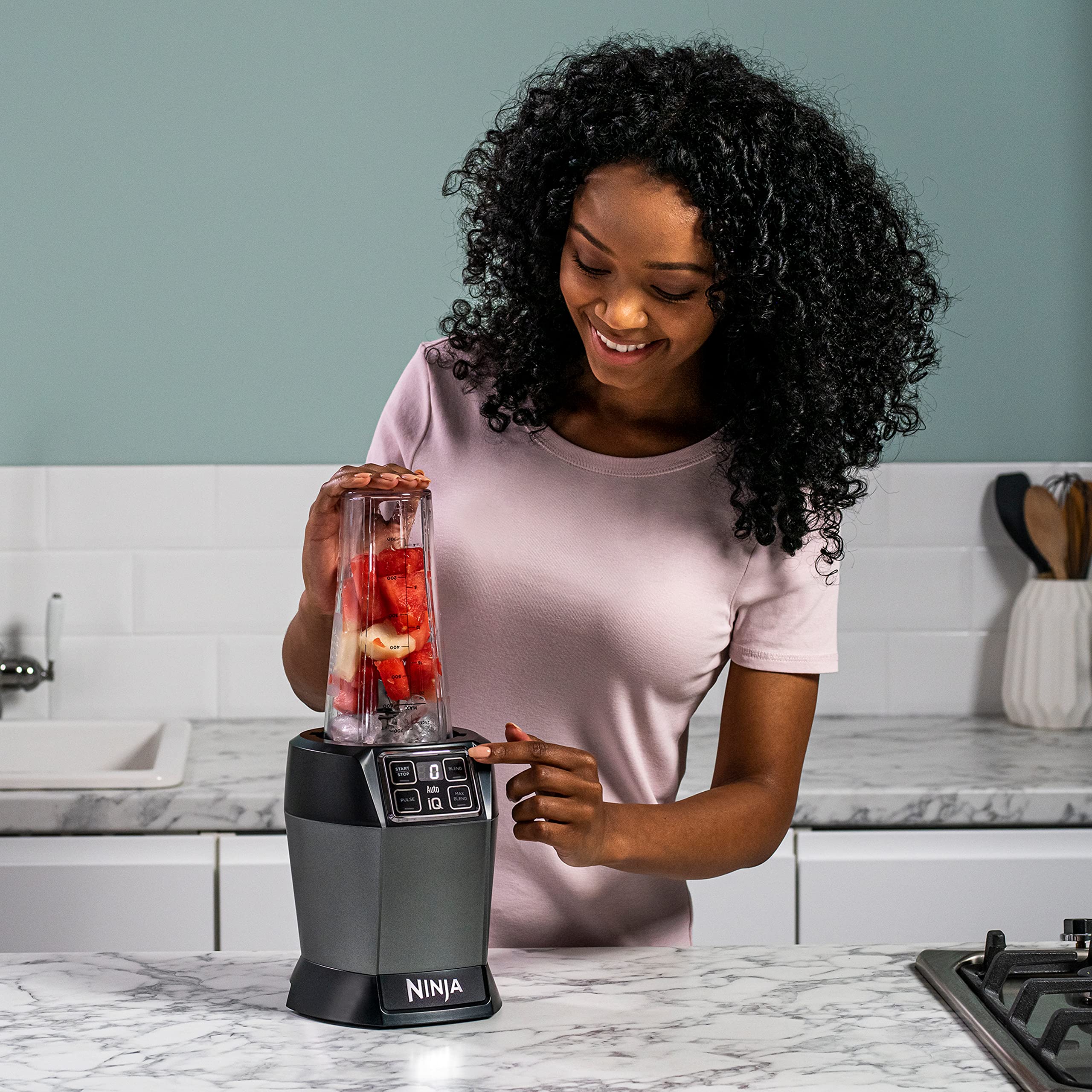


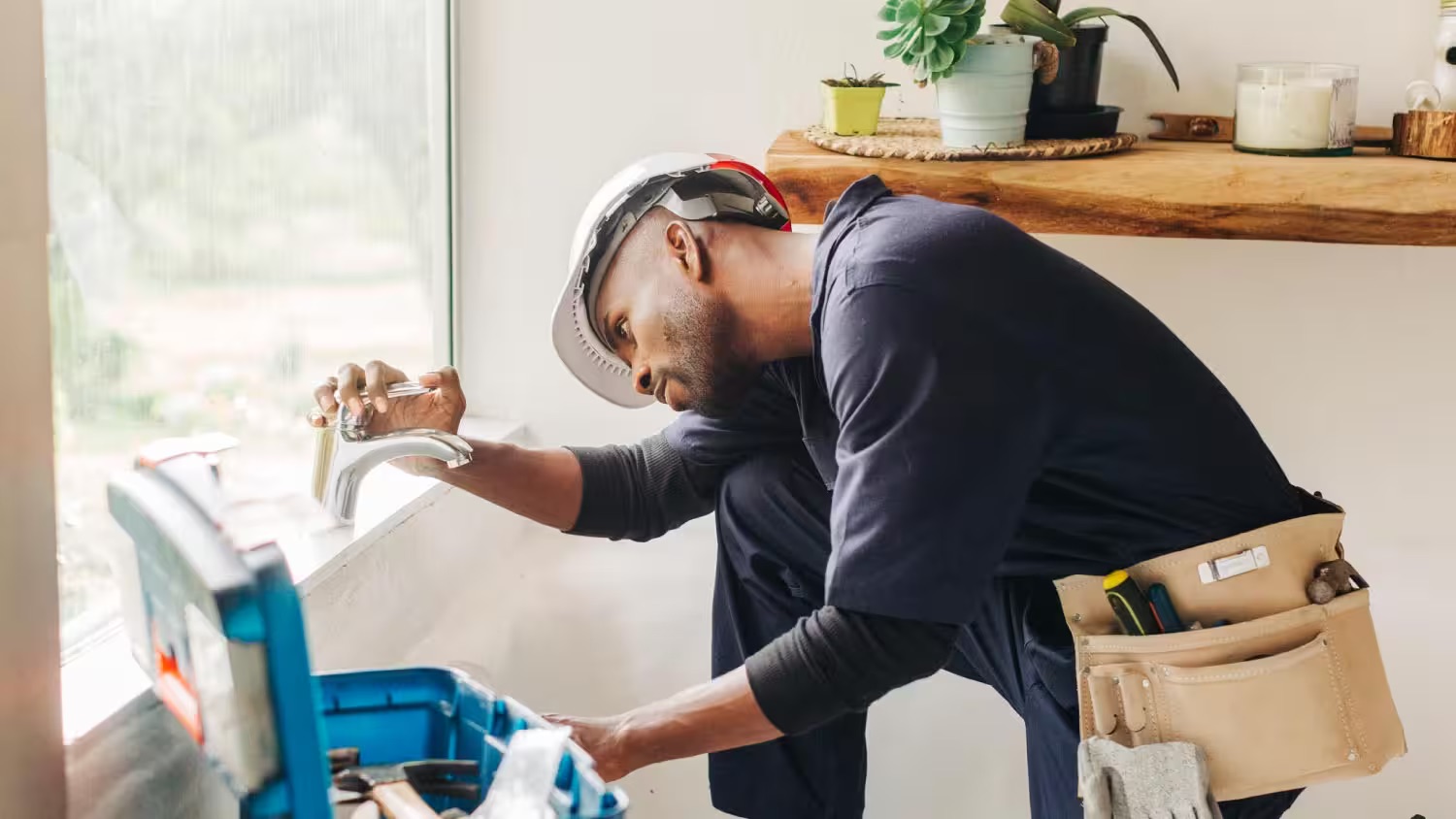
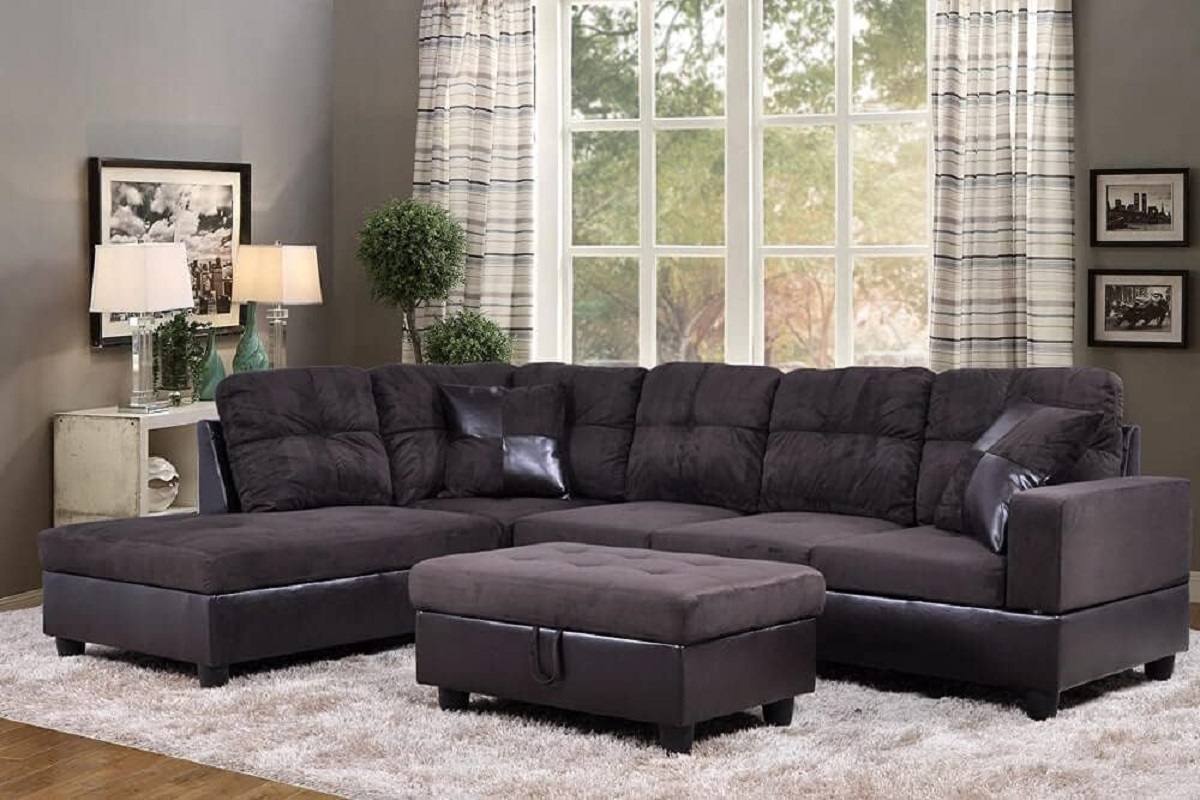
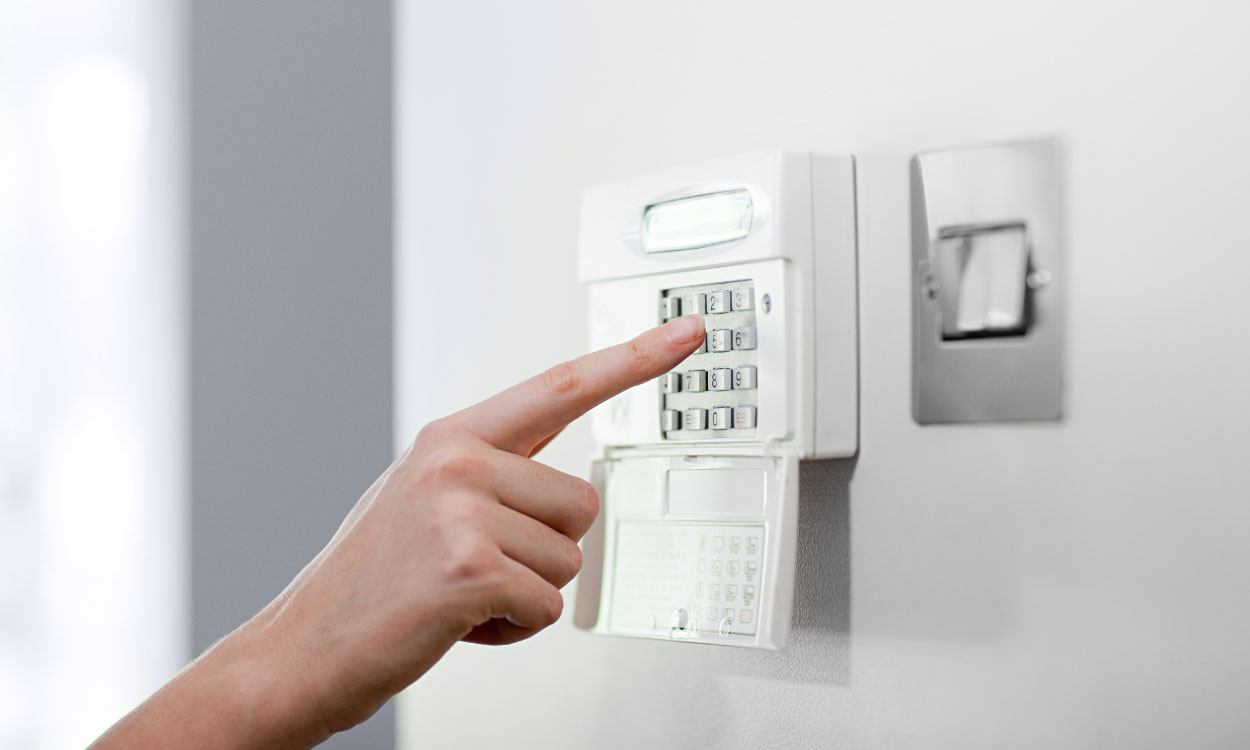
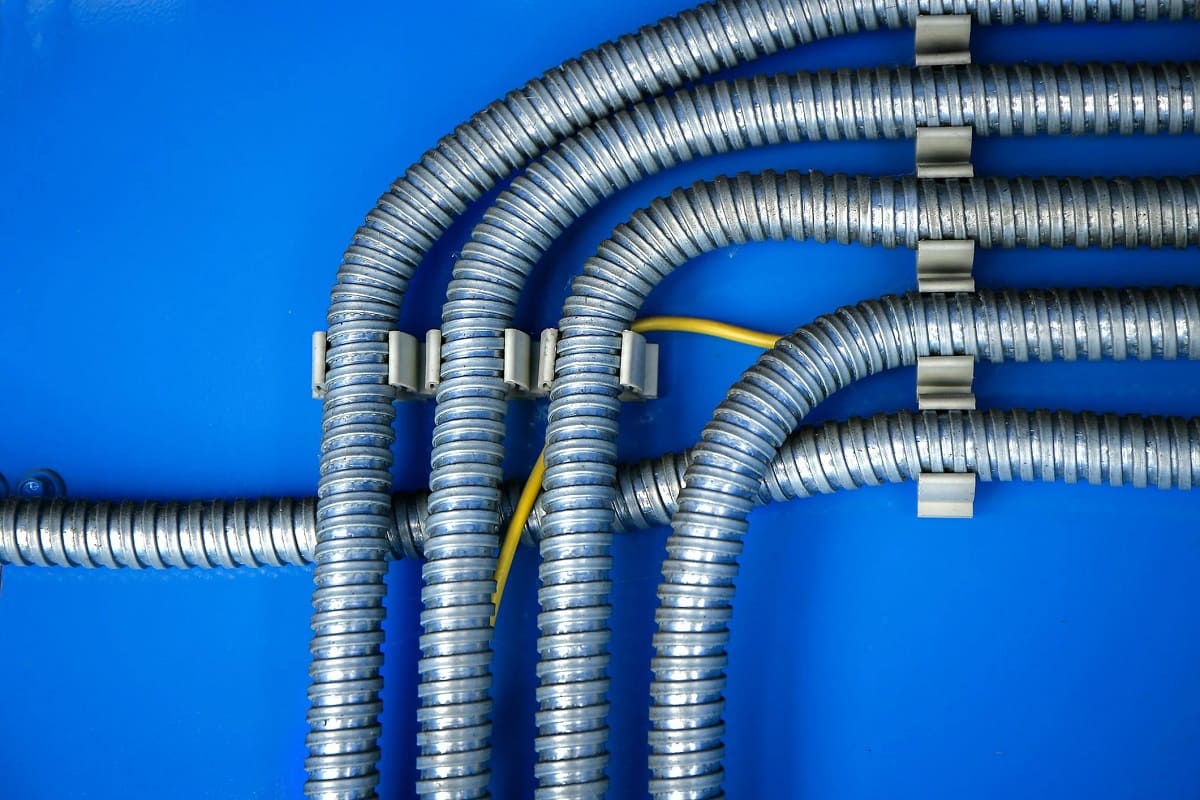

0 thoughts on “Why Is The Basement So Cold”